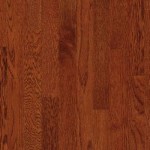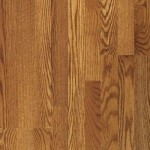Wood Look Vinyl Flooring Installation: A Comprehensive Guide
Wood look vinyl flooring has emerged as a popular alternative to traditional hardwood, offering a blend of aesthetic appeal, durability, and affordability. Its realistic wood grain patterns and textures provide the visual charm of hardwood without the associated maintenance requirements and higher price point. This article provides a detailed guide to installing wood look vinyl flooring, covering essential preparation steps, installation techniques, and post-installation care.
Before embarking on the installation process, it is crucial to understand the different types of wood look vinyl flooring available. The two primary types are vinyl planks and vinyl tiles. Vinyl planks are typically long and narrow, mimicking the appearance of hardwood planks, while vinyl tiles are usually square or rectangular. Both options come in various thicknesses and wear layers, affecting their durability and suitability for different areas of the home. Understanding these differences allows homeowners to select the most appropriate product for their specific needs and traffic levels.
Beyond the type of vinyl, the installation method also varies. There are three main installation methods for wood look vinyl: glue-down, click-lock, and loose-lay. Glue-down vinyl is adhered directly to the subfloor with adhesive, creating a permanent bond. This method is often preferred for commercial applications and areas with high moisture levels. Click-lock vinyl features interlocking edges that snap together, creating a floating floor that does not require adhesive. This method is popular for its ease of installation and ability to be installed over existing flooring. Loose-lay vinyl, as the name suggests, is designed to be installed without adhesive or click-lock mechanisms. It relies on its weight and a high-friction backing to stay in place. This method is often used for temporary installations or areas where easy removal is desired.
Preparing the Subfloor: A Foundation for Success
Proper subfloor preparation is paramount for a successful wood look vinyl flooring installation, regardless of the installation method chosen. The subfloor must be clean, level, dry, and structurally sound. Any imperfections or irregularities in the subfloor will telegraph through the vinyl flooring, resulting in an uneven and potentially damaged surface. Addressing these issues before installation is crucial for achieving a professional-looking and long-lasting floor.
The first step in subfloor preparation is cleaning. Remove all debris, dirt, dust, and existing flooring materials. Use a scraper or putty knife to remove any adhesive residue or stubborn stains. A thorough vacuuming is essential to eliminate any remaining particles. If the subfloor is concrete, consider using a concrete grinder or etching solution to remove any laitance (a weak, powdery layer on the surface of new concrete). For wood subfloors, check for loose boards or protruding nails and repair or replace them as needed.
Leveling the subfloor is equally important. Use a self-leveling compound to fill in any low spots or cracks. Apply the compound according to the manufacturer's instructions, ensuring a smooth and even surface. For larger areas that require significant leveling, a professional floor leveling service may be necessary. Once the self-leveling compound is dry, sand down any high spots to create a perfectly flat surface. The tolerance for flatness is typically specified by the vinyl flooring manufacturer and should be adhered to strictly.
Moisture testing is another critical step in subfloor preparation, especially for concrete subfloors. Excessive moisture can lead to adhesive failure, mold growth, and warping of the vinyl flooring. Use a moisture meter to measure the moisture content of the subfloor. The acceptable moisture level will vary depending on the type of vinyl flooring and adhesive used. If the moisture level is too high, take steps to mitigate the moisture problem before proceeding with the installation. This may involve installing a moisture barrier or allowing the subfloor to dry thoroughly. For wood subfloors, ensure adequate ventilation to prevent moisture buildup.
Installing Wood Look Vinyl Flooring: A Step-by-Step Approach
The installation process will vary depending on the chosen installation method (glue-down, click-lock, or loose-lay). However, some general principles apply to all methods. Always follow the manufacturer's instructions for the specific vinyl flooring product being installed. These instructions will provide detailed guidance on subfloor preparation, adhesive application (if applicable), cutting techniques, and seam treatment.
For glue-down vinyl, apply the adhesive evenly to the subfloor using a notched trowel. The type of adhesive and the size of the notches on the trowel will be specified by the vinyl flooring manufacturer. Allow the adhesive to become tacky before installing the vinyl planks or tiles. Place the vinyl flooring carefully onto the adhesive, ensuring proper alignment and tight seams. Use a roller to press the vinyl firmly into the adhesive, removing any air pockets. Clean up any excess adhesive immediately with a damp cloth.
For click-lock vinyl, begin by installing a moisture barrier underlayment if required by the manufacturer. Start the first row of planks or tiles along a straight wall, leaving a small expansion gap (typically ¼ inch) between the flooring and the wall. Connect the planks or tiles by engaging the interlocking edges at a slight angle and then pressing them down until they click into place. Use a tapping block and a rubber mallet to ensure a tight fit. Stagger the end joints of each row to create a more natural and visually appealing appearance. Cut the planks or tiles as needed to fit around obstacles and corners. Use a jigsaw or utility knife with a scoring tool for precise cuts.
For loose-lay vinyl, ensure the subfloor is exceptionally clean and smooth. Some manufacturers recommend using a perimeter adhesive to secure the edges of the flooring. Lay the vinyl planks or tiles in the desired pattern, ensuring tight seams. Use a utility knife to trim the flooring around the perimeter of the room and around any obstacles. Loose-lay vinyl is often easier to install and remove than glue-down or click-lock vinyl, making it a suitable option for temporary installations or areas where flexibility is desired.
Regardless of the installation method, it is essential to maintain consistent alignment and tight seams throughout the installation process. Use a straight edge and a level to ensure that the flooring is installed straight and level. Clean up any spills or debris immediately to prevent staining or damage to the vinyl flooring. Allow the adhesive (if used) to cure completely before allowing heavy traffic on the floor.
Post-Installation Care and Maintenance: Preserving the Beauty
Proper post-installation care and maintenance are crucial for preserving the beauty and extending the lifespan of wood look vinyl flooring. Regular cleaning and preventative measures can help prevent scratches, stains, and other damage.
Sweep or vacuum the floor regularly to remove dirt, dust, and debris. Use a soft-bristled broom or a vacuum cleaner with a floor brush attachment to avoid scratching the surface. Mop the floor with a damp mop and a mild, pH-neutral cleaner specifically designed for vinyl flooring. Avoid using harsh chemicals, abrasive cleaners, or scouring pads, as these can damage the finish. Dry the floor thoroughly after mopping to prevent water spots.
Protect the floor from scratches and dents by using furniture pads under the legs of chairs, tables, and other heavy furniture. Use doormats at entrances to trap dirt and debris before they are tracked onto the floor. Avoid wearing shoes with high heels or cleats on the vinyl flooring. Clean up spills immediately to prevent staining. Use a soft cloth and a mild cleaner to remove any spills or stains. Avoid using abrasive cleaners or scrubbing too vigorously, as this can damage the finish.
Sunlight can fade the color of vinyl flooring over time. Use curtains, blinds, or window film to protect the floor from direct sunlight. Consider rotating area rugs periodically to prevent uneven fading. Avoid placing heavy objects directly on the vinyl flooring for extended periods, as this can cause indentations. Use plywood or mats to protect the floor when moving heavy furniture or appliances.
For glue-down vinyl flooring, periodically inspect the seams for any signs of lifting or separation. Repair any loose seams immediately using a vinyl seam sealer. For click-lock vinyl flooring, check for any gaps or movement between the planks or tiles. If necessary, replace any damaged or loose planks or tiles. For loose-lay vinyl flooring, ensure that the edges are securely in place and that the flooring is not shifting or bunching up. Re-adjust the flooring as needed to maintain a smooth and even surface.

How To Install Vinyl Plank Flooring As A Beginner Home Renovation

A Beginner S Guide To Installing Vinyl Plank Flooring Dumpsters Com

How To Install Vinyl Plank Flooring Quick And Simple

Lvp Flooring Installation How To Install Luxury Vinyl Plank In A Basement Diy

A Complete Guide How To Stagger Vinyl Plank Flooring Whole Cabinet Supply

Dos And Don Ts For Installing Vinyl Plank Floors In The Bathroom Advice Homeowners
Vinyl Flooring That Looks Like Wood

Vinyl Vs Laminate Flooring Pros Cons And Differences Forbes Home

Must See Hardwood Plank Looks In Durable Luxury Vinyl Tile

Types Of Vinyl Flooring The Home Depot








